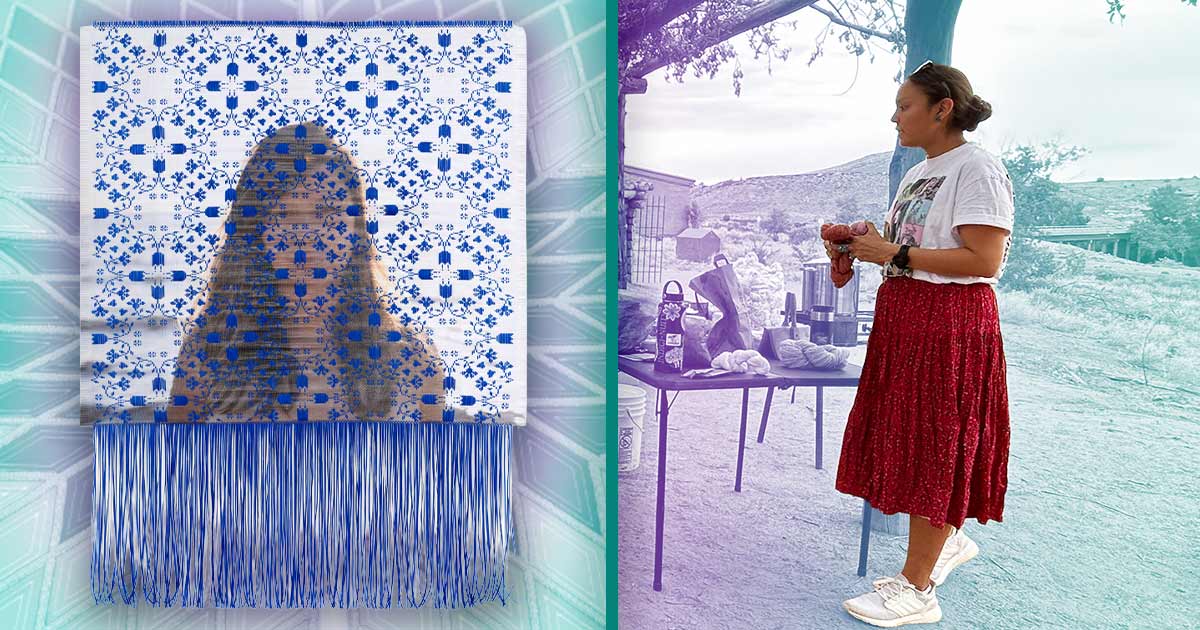
Presenting stories that are part of the American fabric
Our Nation’s Spaces Program brings artist and presenter together in Washington, D.C.
As soon as Carla Perlo saw a video of Rosy Simas dancing, her mind was made up.
"She's exquisite," said Perlo, who is the founding director of Dance Place in Washington, D.C. and was immediately convinced to apply for a First Peoples Fund Our Nation's Spaces grant so Simas could complete a residency at the studio.
For more than a year now, First Peoples Fund has partnered with The Ford Foundation to offer grants up to $20,000 to Diverse Arts Spaces grantees through the Our Nation's Spaces Program, and this new pairing of cultural institution and artist is one of the most recent recipients.
Simas said she approached Dance Place with the hope of a multiple-week residency.
"I think this program provides an incredible opportunity to both artists and presenters, as well as their audiences," said Simas, who is Seneca from the Cattaraugus Reservation in New York.
Simas will spend a week in D.C. early next year touring the area, spending time at the dance studio, making connections around the city and building support and awareness for her second residency, which will take place a couple months later and will include workshops and a production.
Simas said she was pleasantly surprised that First Peoples Fund selected a contemporary Native artist like herself to include in the program.
"There are not very many Natives in contemporary dance today," she said, "and it seems sometimes that traditional art forms are more often funded and supported. I was encouraged by First Peoples Fund to work with an organization and apply, but it was hard to find an arts center that would be a great fit. Then I found Dance Place."
Traditional artwork by Natives "is not static," Simas said. "This is part of a greater interest of mine. Having the non-Native community exposed to work by a contemporary Native artist is beneficial in changing the minds of what Native people make."
Perlo said the production, which includes Simas dancing in front of a film, will be stunning.
"The film makes it feel like we are on her homeland, it's just beautiful. It transports us to a different place. We're no longer in the theater... I was so taken by the juxtaposition of her against the film. I thought, 'Wow, that will be so beautiful and powerful."
Perlo said she also looks forward to introducing something new. Very few Native dancers approach the studio for shows.
"We have a 33-year history of presenting a wide variety of dance forms," she said. "In the city, performing arts can really help people understand cultures they don't understand. That's the biggest challenge—unfamiliarity. We get to confront that challenge head-on with this program."
At Dance Place, she said, audience members take in productions in the theater or the plaza.
"You're sitting there and you care less about where the person is from because you're just reacting to the power of art," she said. "You see people from very different cultures. You're inspired and moved and applauding. That never would have happened if just having a dialogue."
Race and ethnicity are removed, she said.
"Everybody gets chills, and says the artist is really talented," she said. "We drop that preface of where they're from, the color of the skin, the cultural background. Really, that's what bringing artists and performances to our space is about for me."
Simas said her work is not political or historical, though it does touch on themes of her ancestors.
It's the sense of being a part of something that is both a personal and a universal story," she said.
Perlo is grateful for the grant and hopes to work with more Native artists in the future.
"First Peoples Fund is such a great vehicle that helps us think about and identify artists to work with, and gives us the support we need to bring them to Washington because it's so expensive," she said. "In this funding climate, it's great that First Peoples stepped up and said we think this work is important."
Natives having a forum to have their voice heard will have an impact on society, she said.
"Otherwise, they're left out of the story," she said. "First Peoples Fund is a fantastic resource to say, 'Let's not let these voices be silent and let it be part of the American fabric.'"







































































































